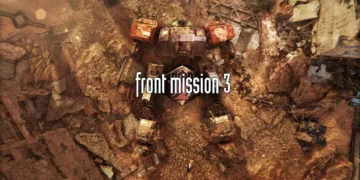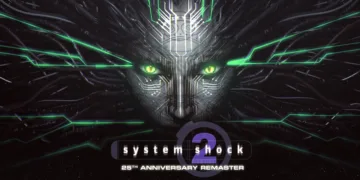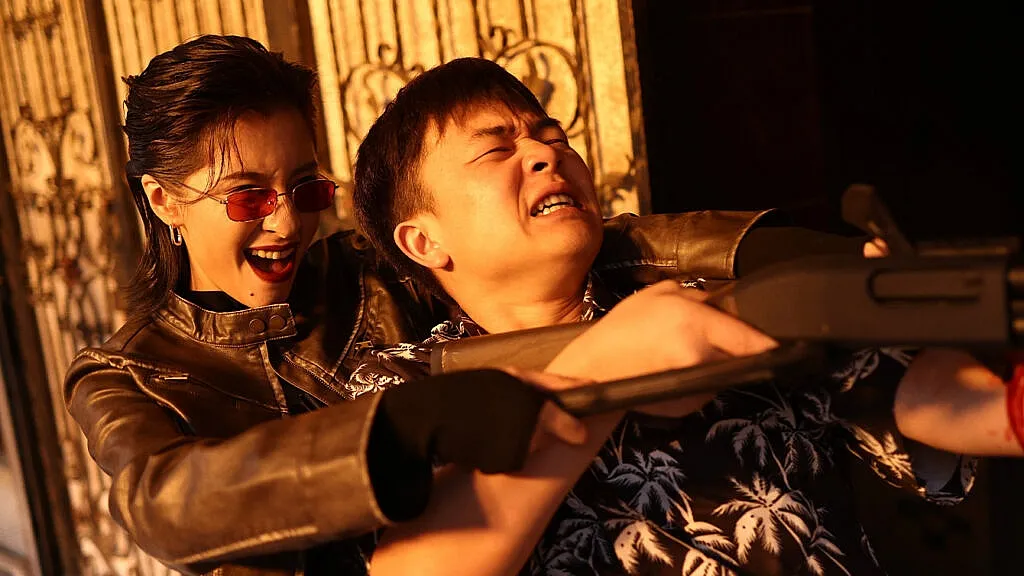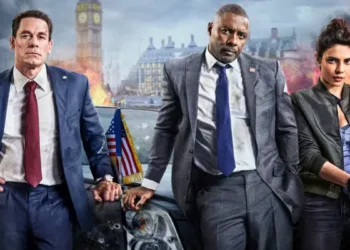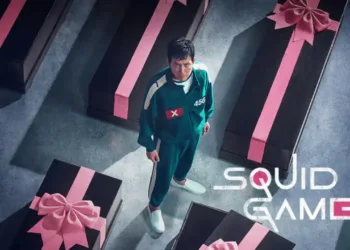“Striking Rescue” emerges as a Chinese-produced martial arts action film that features Tony Jaa in a leading role, marking his return as a central figure in high-energy cinema. This work appears within the growing digital platform scene, offering a platform for both traditional martial arts display and modern cinematic storytelling. The film represents a fusion of stylistic influences drawn from distinct Asian cultures, with Jaa’s renowned physical performance at the forefront.
Tony Jaa, whose earlier roles like those in “Ong Bak” set standards for physical storytelling, now steps into a narrative that revisits his powerful persona. His performance revives the physical dynamism he is known for, transitioning him from ensemble appearances to a spotlight role that underscores his enduring presence.
The film also mirrors its cultural roots, merging Chinese cinematic techniques with Thai martial arts flair. This combination offers a visual experience that speaks to audiences familiar with classic action while appealing to viewers accustomed to modern streaming entertainment.
Specific moments, such as the intense warehouse sequence, underscore the film’s reliance on both traditional fighting methods and innovative visual sequences, inviting the audience to consider the interplay between cultural legacy and current digital media trends.
Plot and Narrative Structure: A Cross-Cultural Examination
“Striking Rescue” follows the tale of Bai An, a man determined to confront those responsible for the loss of his wife and daughter. The plot centers on a classic quest for retribution that draws on well-known action tropes.
Bai An’s pursuit begins with a violent confrontation in a warehouse—a scene that sets the tone for a film steeped in kinetic combat and raw emotion. This initial encounter is not merely a display of physical prowess; it lays the groundwork for understanding the personal costs of vengeance.
The narrative unfolds through a series of flashbacks that offer glimpses into Bai An’s troubled past. These intermittent scenes gradually build a picture of grief and determination, revealing his motivations in a measured and repetitive manner. At the same time, a secondary storyline emerges with the abduction of He Ting.
Her character, tied to the network of antagonists, introduces additional stakes that interlace with Bai An’s solitary mission. The connection between her plight and the larger scheme behind the family tragedy provides moments where the film’s visual storytelling techniques align with its narrative structure.
The pacing of the film invites mixed reactions. Repeated flashbacks contribute to a rhythm that emphasizes the cyclical nature of loss and revenge, yet this method sometimes interrupts the momentum of the action scenes. The interplay between detailed backstory and brisk combat segments creates a tension that is both familiar and challenging.
Here, visual sequences—marked by energetic choreographed fights—work in tandem with narrative beats, offering a viewing experience that reflects distinct cultural influences. Elements drawn from Chinese cinematic style contrast with traditional Thai martial arts, resulting in scenes that speak to a diverse audience. These moments serve as a point of comparison with other works within the same genre, prompting the audience to consider how cultural storytelling can shape both character and conflict.
Character Analysis: Cultural Reflections and Emotional Conflict
Bai An, brought to life by Tony Jaa, stands at the center of the narrative as a father overcome by grief who transforms his sorrow into a fierce pursuit of retribution. His physical prowess on display during combat sequences contrasts sharply with the quiet moments of inner struggle that mark his character.
Jaa’s performance highlights a complex mix of raw determination and quiet despair, revealing a man hardened by loss yet haunted by memories. This dual nature invites a look at how personal tragedy shapes actions that ripple across cultural narratives of honor and duty.
He Ting emerges as a figure who bridges generational gaps. Serving as a surrogate daughter, her presence shifts the film’s focus from isolated vengeance to a shared path toward understanding and healing. Her interactions with Bai An add depth to the storyline, with moments that capture both conflict and tenderness. Their evolving bond mirrors traditional familial roles seen in regional storytelling while adapting to modern cinematic techniques that stress emotional nuance.
The supporting cast contributes a rich tapestry of antagonism and support. Characters such as He Ying Yao, the diligent security operative Wu Zheng, and the relentless drug lord Clay provide essential counterpoints to Bai An’s internal and external battles.
Each character is carefully crafted to enhance the main narrative, their distinct traits reflecting societal roles shaped by local customs and historical influences. Their presence deepens the overall experience, prompting viewers to consider how personal motives interact with wider cultural expectations and artistic traditions.
Action and Choreography: Cultural Synthesis in Motion
The action in Striking Rescue defines Tony Jaa’s cinematic return. His signature moves—devastating flying knees and powerful elbow strikes—blend seamlessly into the narrative, driving the film’s aggressive tone.
These physical moments symbolize Bai An’s internal rage and grief. The opening warehouse brawl, where Jaa’s character demolishes henchmen, immediately reveals a film unafraid of intense physical confrontation. This sequence captures Jaa’s style—agile yet brutal, choreographed for maximum impact. The climactic finale elevates the fight scenes, with each strike conveying the raw emotion behind Bai An’s vengeance.
The film skillfully merges Thai and Chinese martial arts influences. Jaa’s Muay Thai-driven choreography contrasts with the fluid, acrobatic fight styles of Chinese action cinema.
Traditional Chinese stunt techniques shine through elaborate sequences where the environment becomes a weapon—props and character movements blend seamlessly. Sequences oscillate between rapid combat and aerial stunts, creating a dialogue between regional martial arts traditions and global action film language.
The visual dynamism encounters some challenges. Overuse of slow-motion shots occasionally disrupts the action’s rhythm, reducing the immediacy of physical confrontations. Certain fight sequences, especially those with secondary characters, show inconsistent choreography—slower pacing and less precise movements compared to Jaa’s refined technique. These subtle imperfections impact the overall cohesion of the film’s action sequences.
Direction, Cinematography, and Technical Aspects: The Art of Action in Transition
Director Cheng Siyi crafts Striking Rescue with a distinctive approach, balancing genre expectations and creative filmmaking. The storytelling follows revenge-driven action drama traditions from Chinese and Thai martial arts cinema.
Cheng occasionally subverts these expectations by weaving slower, reflective moments into the high-energy narrative. Quieter sequences explore Bai An’s grief, creating a complex emotional landscape against explosive fight scenes. The film occasionally breaks from typical action movie formulas, offering deeper character exploration within an intense framework.
Striking Rescue combines dynamic visual techniques with traditional martial arts cinematography. Camera work captures Tony Jaa’s powerful movements through tight angles that amplify each strike. Extended slow-motion shots emphasize combat brutality, while wider frames reveal full-scale action chaos.
The visual style connects martial arts heritage with contemporary action film approaches. Editing rhythms sometimes interrupt the film’s flow. Rapid cuts and frequent close-ups occasionally fragment the fight choreography, limiting the movement’s natural grace.
Technical elements present challenges in sound design and translation. Combat sequences lose impact through inconsistent sound effects that fail to match physical intensity. Dialogue struggles with translation issues, particularly in exchanges between Jaa and Mandarin-speaking actors. These technical limitations create complications for international viewers, introducing an unexpected layer of complexity to the film’s cross-cultural storytelling approach.
Themes and Emotional Undertones: Exploring Grief, Vengeance, and Healing
Striking Rescue explores revenge as a central narrative force driving Bai An’s violent path. His pursuit of justice emerges from deep emotional pain. Each fight becomes a physical manifestation of his grief, blending combat with raw emotional release.
Revenge propels his actions, while an underlying current of potential healing suggests transformation might emerge from destructive impulses. The character’s journey reveals the complex emotional landscape of loss and retribution.
The loss of Bai An’s family creates a powerful narrative engine. His relationship with He Ting, a surrogate daughter, introduces emotional complexity to the story. She becomes a pathway toward potential healing, challenging Bai An’s consuming desire for vengeance. Their connection transforms the narrative from simple action into a deeper exploration of grief’s impact on human identity and emotional recovery.
Moral complexity defines the film’s character interactions. The story challenges traditional hero-villain dynamics, presenting characters with nuanced motivations. Antagonists exist beyond simple categorization, inviting viewers to examine the intricate nature of human behavior.
This approach creates tension between the straightforward plot and the deeper psychological landscape of the characters, prompting reflection on personal morality within challenging circumstances.
Conclusion and Overall Impact: A Return to Form with Room for Growth
Tony Jaa delivers intense martial arts performance in Striking Rescue, merging traditional Thai combat with contemporary cinema techniques. His fierce physicality and emotional depth transform the character of Bai An.
Action sequences—from the initial warehouse brawl to the final confrontation—explode with dynamic energy. Choreography blends classic martial arts movements with modern visual storytelling, creating an electrifying cinematic experience that connects with action film enthusiasts.
Technical challenges emerge throughout the film. Repetitive flashbacks interrupt narrative flow, slowing the story’s momentum. Sound design and translation problems weaken emotional impact during critical scenes. These issues create subtle friction within the film’s overall structure, revealing the complexity of cross-cultural storytelling.
Jaa’s performance signals potential for future martial arts cinema. His work demonstrates continued artistic growth and commitment to the genre. Streaming platforms expand opportunities for international action films, potentially reshaping audience expectations and cinematic storytelling approaches.
The Review
Striking Rescue
Striking Rescue delivers a visceral, high-energy return to form for Tony Jaa, blending intense martial arts with modern cinematic techniques. While its action sequences impress and Jaa’s performance shines, the film falters with its pacing and occasional technical issues, including awkward translations. Despite these shortcomings, it offers an engaging ride for fans of the genre, highlighting Jaa’s unique talent and potential for a career resurgence.
PROS
- Tony Jaa's powerful performance and impressive martial arts choreography.
- High-energy action sequences with dynamic fight scenes.
CONS
- Repetitive flashbacks slow down the pacing.
- Technical issues such as awkward translations and inconsistent sound design.

































